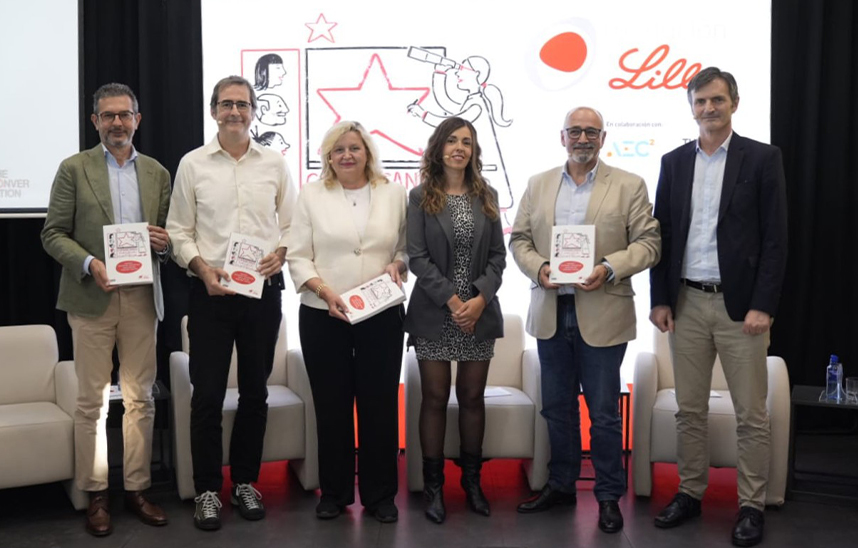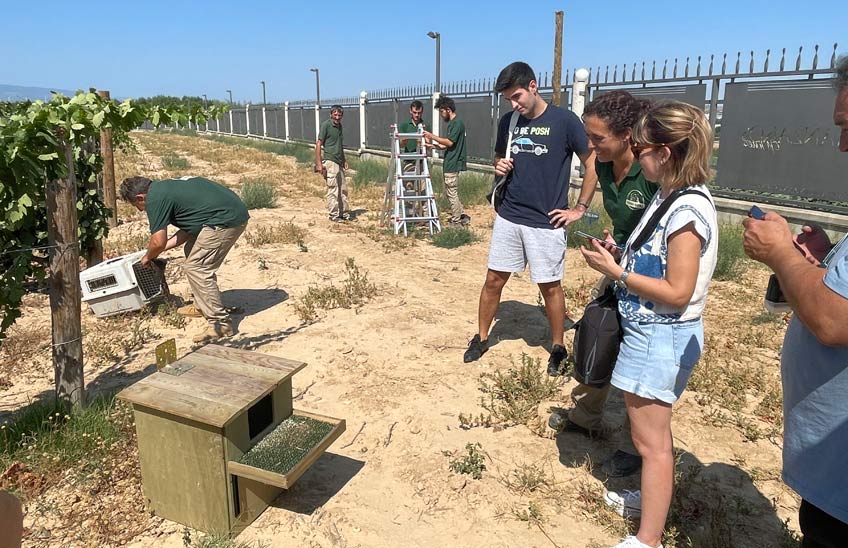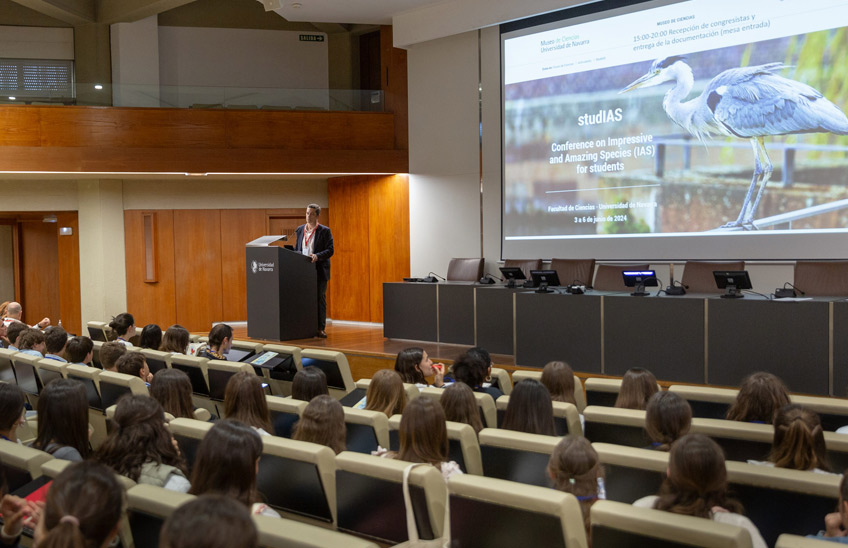A University study analyzes the presence of pollen in different areas of the Autonomous Community of Foral to prevent allergy cases
The research allows doctors and patients to know, for the first time, the variations in the presence of pollen from north to south of Navarra.

FotoCedida<br>/Mónica González Alonso con BAA500 (Bio Aerosol Analyzer), aparato que toma muestras de aire, les hace fotos, y cuenta y clasifica el polen que hay en ellas de manera automática
25 | 04 | 2024
Between 20% and 30% of the population suffers from pollen allergy according to programs of study, and it is the second most common allergy after that caused by dust mites. Since the 1950s, pollen in the atmosphere has been monitored to guide the forecasts and analyses of allergists, and progress is increasing in subject for detection and prevention.
These issues have driven the development of the doctoral thesis of Mónica González Alonso (Pamplona, 32 years old) who has studied the presence of pollen in the northern, central and southern areas of Navarra, research which she successfully defended last July at department of Environmental Biology of the University of Navarra, under the direction of Professor Arturo Ariño. The thesis was developed in the context of the Europeanproject LIFE-IP NADAPTA-CC, received by the Government of Navarra to implement measures for adaptation to climate change, including improving the monitoring of pollen levels in the air of the region. The Pamplona native continues her research, thanks to a postdoctoral contract at the Center for Allergy and Environment in Munich (Germany).
The analysis of the pollen samples collected from Navarra for this study has made it possible to draw up pollen calendars and to know which plants pollinate each month, which can help doctors and patients in the prevention and diagnosis of possible allergies. In addition, the Instituto Navarro de Salud Pública y Laboral (ISPLN), partner of project Life-Nadapta and contractor of the monitoring study, publishes the data during the spring campaign and offers an alert system, via sms or email, that informs about the forecast for the next week to which any citizen can register for free.
During the thesis , Monica has worked with artificial intelligence algorithms to automate part of the analysis process, something that until now was done by guide.
"An interesting fact that we have observed is the large presence of the Alternaria fungus in the south, in the area of Tudela, where it accounts for almost a third of all the particles studied. Knowing these data more quickly at times of need such as the arrival of spring is a great advance in subject detection and prevention," says the researcher.
These reasons demonstrate the importance of programs of study like Monica's, who assures that "the most important thing is to continue with monitoring, since in order to study the impacts of climate change it is necessary to collect data continuously and over a long period of time". In this way we will be able to know how the vegetation is being affected, and what implications there are on human health, among other factors.
Mónica González Alonso has a degree in Biology (2013), Master's Degree in Biodiversity, Landscapes and Sustainable management (2014) and a PhD from the School of Sciences of the University of Navarra (2023).
Bibliographical references
- González-Alonso, M., Ariño, A.H. Digitally accessible knowledge about airborne pollen data in Spain. Aerobiologia 39, 175-179 (2023). https://doi.org/10.1007/s10453-022-09776-1
- González-Alonso, M., Boldeanu, M., Koritnik, T., Gonçalves, J., Belzner, L., Stemmler, T., Gebauer, R., Grewling, Ł., Tummon, F., Maya-Manzano, J. M., Ariño, A. H., Schmidt-Weber, C. & Buters, J. (2022). Alternaria spore exposure in Bavaria, Germany, measured using artificial intelligence algorithms in a network of BAA500 automatic pollen monitors. Science of The Total Environment, 160180, DOI: 10.1016/j.scitotenv.2022.160180.
- M. Boldeanu, M. González-Alonso, H. Cucu, C. Burileanu, J. M. Maya-Manzano and J. T. M. Buters (2022). Automatic Pollen Classification and Segmentation Using U-Nets and Synthetic Data, IEEE Access, vol. 10, pp. 73675-73684, doi: 10.1109/ACCESS.2022.3189012.




